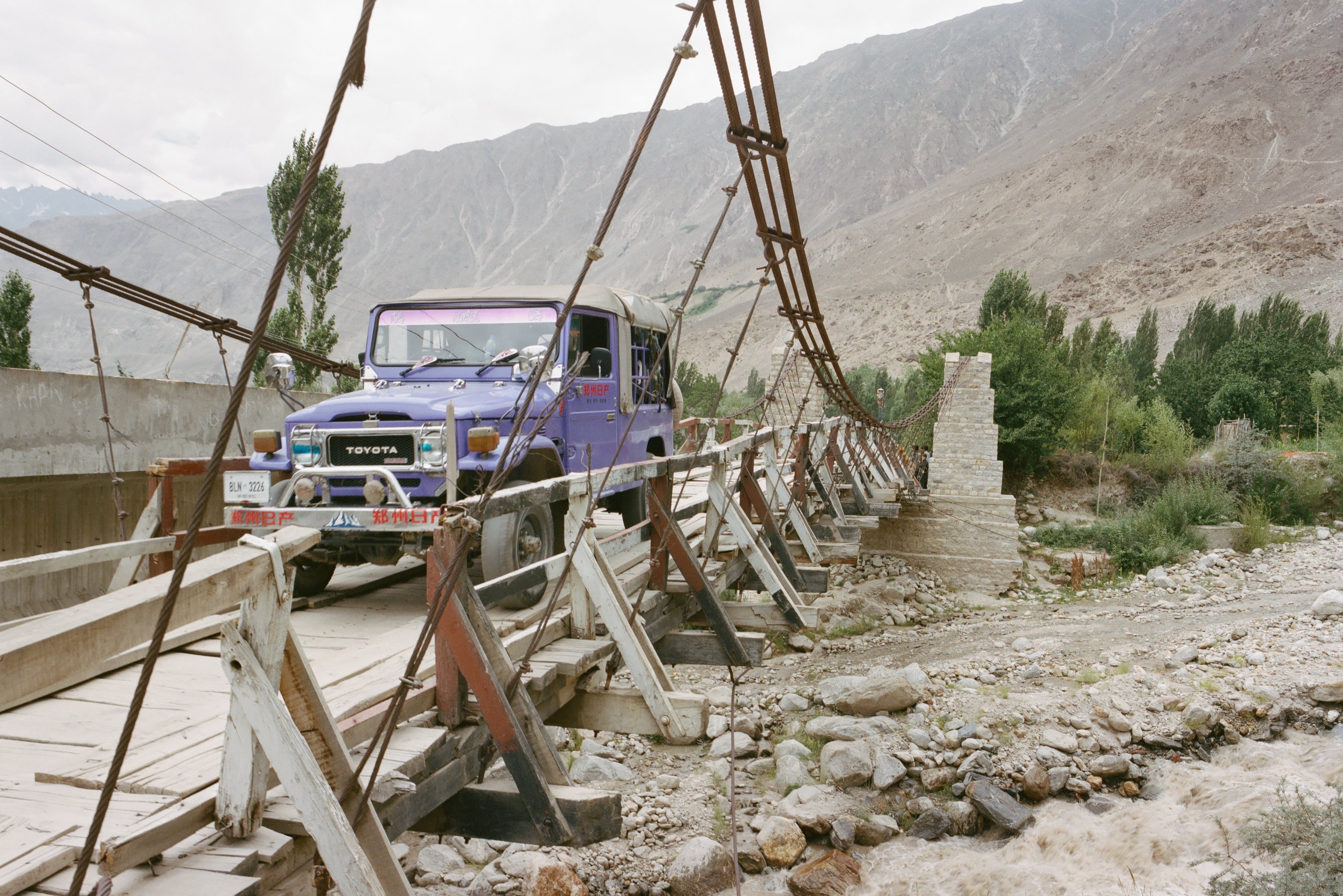After a bone-shaking ride through the saw-toothed peaks of northern Pakistan, we find that floodwaters have wiped away the road ahead. Fortunately, Rashid, our driver, spots another Jeep across the roaring river, which swirls and leaps like a tempestuous sea.
Quickly we transfer our dusty bags and hurry over a rickety footbridge before the ferocious glacial waters devour it too. And this is just the beginning. My husband, Mark, and I are on our way to Askole, the gateway to K2 base camp – and the start of one of the world’s most remote and challenging treks.
Until the 1980s, the journey to this frontier village was only possible on foot, extending what today is a two-week trek. The construction of a dirt track connecting Skardu, the town we flew into from the capital, Islamabad, to Askole, shortened the distance, but the route remains rugged.

Read more: Is Bhutan’s tourism tax an elitist ruse or the blueprint for the future of sustainable travel?
Askole sits in the region of Baltistan: home to five of the world’s 14 peaks above 8,000m and more than 100 surpassing 7,000m. K2, the second-tallest mountain on Earth, is the poster child of the Karakoram range, which was thrown up millions of years ago when the Indian and Eurasian tectonic plates smashed together.
Trekking to K2’s base camp gives an alternative to the more commercialised Everest route in nearby Nepal, which sees 40,000 hikers annually compared to just 1,000 visitors here. While K2’s numbers are growing, Everest base camp is still more crowded with tea houses and lodges along the way, whereas K2 offers no such comforts – only rock, ice and wilderness. Recent images of Everest show climbers lined up like ants to reach the summit, yet K2 is far more technical, reserved only for the most experienced.
On our first day, we leave the pin-bright, emerald-green terraces of Askole – our last glimpse of civilisation – and head onto a vast, stony plateau. Our gear is carried by a colourful caravan of mules and eight porters with homemade rucksacks; one has a cage of live chickens strapped to the top, and another leads a goat on a rope, both destined to become our future meals. Again, the path in front is washed away; we watch another…
Click Here to Read the Full Original Article at The Independent Travel…
